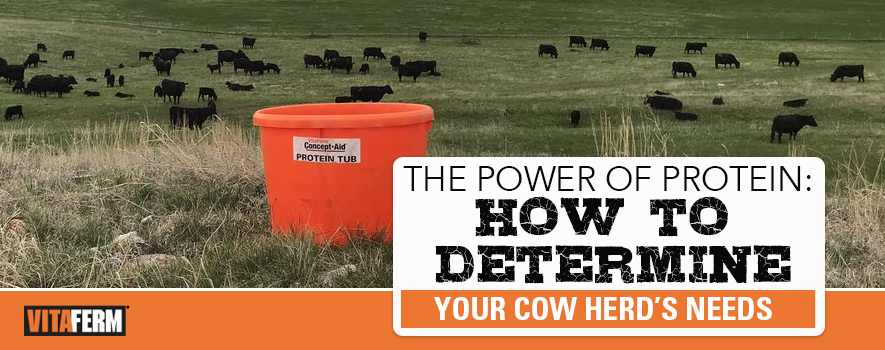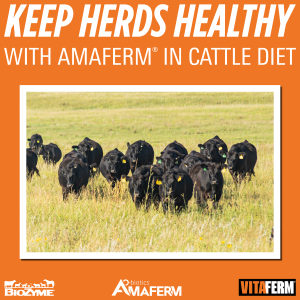Protein is a powerful nutrient for your cow’s digestive system and rumen to function properly. However, spending money on protein supplementation may not always be the best investment a cow-calf producer makes. You need to know when to supplement protein and how much to provide your herd to make it a wise investment in your operation.
Protein is essential within the diet of a ruminant to supply the ammonia needed for microbial growth and to provide the amino acids needed for absorption from the small intestine. A protein deficiency can limit microbial activity, microbial protein synthesis and rate of digestion. In turn, these can impact feed and energy intake. Furthermore, if an animal receives insufficient amounts of protein, meat and milk production can be dramatically reduced.
Here are some helpful tips to ensure proper protein supplementation:
Identify Protein Needs.
In order to develop a cost-effective supplementation program, you first must know the protein requirements of your animals. Requirements for protein vary throughout the year and depend on the animal’s stage of production. According to Kevin Glaubius, Director of Nutrition for BioZyme® Inc., the cow’s protein requirements will vary from about 9% to 12%, depending on where she is in the production cycle. Her requirements are lowest post-weaning to late gestation and continue to increase as she gets closer to calving and lactation. A cow’s protein requirements are highest during the first two months post-calving due to the increase in protein demanded for lactation.
“If you don’t supplement protein, you are going to limit intake, which limits energy. When energy is limited, she can’t maintain her own body condition, which limits milk production and limits calf gain,” Glaubius said.
Identify What is in Your Feed.
You know the stages of production when your cows need additional protein, but do you know how much protein to supplement them with? Before you start a supplementation program, you need to know exactly what they are already consuming. Protein can come from pasture, stored forages and grain. By understanding the nutrient profile of your available feedstuffs, you can better identify what supplements you need in your feeding program to meet nutrient requirements and optimize animal performance. BioZyme offers forage testing and ration balancing, free to its customers, to help them gain a better understanding of what they are missing in their livestock diets. If you are interested in participating, please contact your ASM.
Identify the Protein Supplement that Best Fits your Scenario.
Cattle producers have options when it comes to choosing the protein that will work best with their management practices.
“One thing I’ve learned over the years, is it is better to use a protein source that consists of more than one protein ingredient, including soybean meal, distiller’s grain or urea. Theoretically, the combination does a better job of supplementing because each in source breaks down at different rates,” Glaubius said.
VitaFerm® Concept•Aid® Protein Products offer two ways to help producers meet their supplemental protein needs. Both supplements contain 20% crude protein and provide enough vitamins and minerals to serve as a replacement for loose mineral supplements. BioZyme offers its protein supplements in a tub or meal form to cater to differing management scenarios, allowing for maximum convenience along with improved animal performance. In addition to the added protein, the Amaferm® found in VitaFerm products increases the rate of digestion, allowing animals to meet their nutrient requirements faster and on less feed. Increased forage digestion provides for greater microbial growth and production of microbial protein to provide the animal with more protein for growth, lactation and reproduction. Furthermore, with Amaferm in the diet you effectively reduce the need to supplement large amounts of protein because you are making more of the protein in the forage available to the animals.
Proper protein supplementation at various stages of production can prove extremely beneficial to overall animal productivity. Remember, keeping your protein program cost effective begins with understanding your protein needs and only supplementing the proper amount when needed. Know your resources and know when you need to give your herd an added boost.



